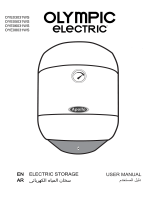
18
Adding Detergents,
Softeners and Bleaches
Detergent Dosage
• Detergent should be selected according to
fabric type, colour, soil level and washing
temperature and should be used according to
the detergent manufacturer’s instructions.
• Too much detergent results in excessive suds
which cause poor washing.
• When you use liquid detergent, follow
the guidelines provided by the detergent
manufacturer.
• You can pour liquid detergent directly into
the main detergent drawer if you are starting
the wash cycle immediately. It is also
recommended that it be added into the drum
when loading the clothes.
• Do not use liquid detergent if you are using
Delay function, or if you have selected
Pre Wash+Normal option, as the liquid may
harden.
• Reduce the amount of detergent if too many
suds are formed.
• Detergent usage may need to be adjusted for
water temperature, water hardness, size and
soil level of the laundry. For best results, avoid
oversudsing.
• Refer to the label of the clothes, before
choosing the detergent and water temperature.
• Use only suitable detergents for the respective
type of clothing:
− General powdered detergents for all types
of fabric
− Powdered detergents for delicate fabric
− Liquid detergents for all types of fabric or
designated detergents only for wool
• For better washing performance and whitening,
use detergent that contains general powdered
bleach.
• Detergent is dispensed from the dispenser at
the beginning of the cycle.
• Dilute liquid detergent with water, pour into the
drum and start the cycle.
CAUTION
• Using liquid detergent without diluting, or
leaving laundry for a long time after pouring
diluted liquid detergent into the drum might
cause the clothes to be damaged, bleached,
discoloured.
NOTE
• Do not let the detergent harden. Doing so may
lead to blockages, poor rinse performance or
odour.
• Full load: According to manufacturer’s
recommendation
• Part load: 3/4 of the normal amount
• Minimum load: 1/2 of full load
Adding Detergents
• Add the measured amount of detergent into the
detergent compartment a.
• Use more detergent if you have hard water,
large items, greasy or oily soils or lower water
temperature.
• Soap flakes or granulated soap powders should
not be used in the appliance. When washing
woollens, remember to use detergent suitable
for washing woollens.
NOTE
• Use the appropriate amount of detergent. Too
much detergent, bleach or softener may cause
an overflow or a malfunction.




















